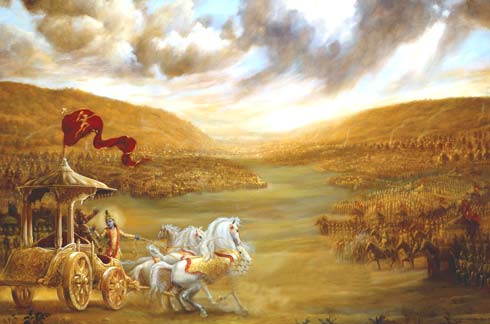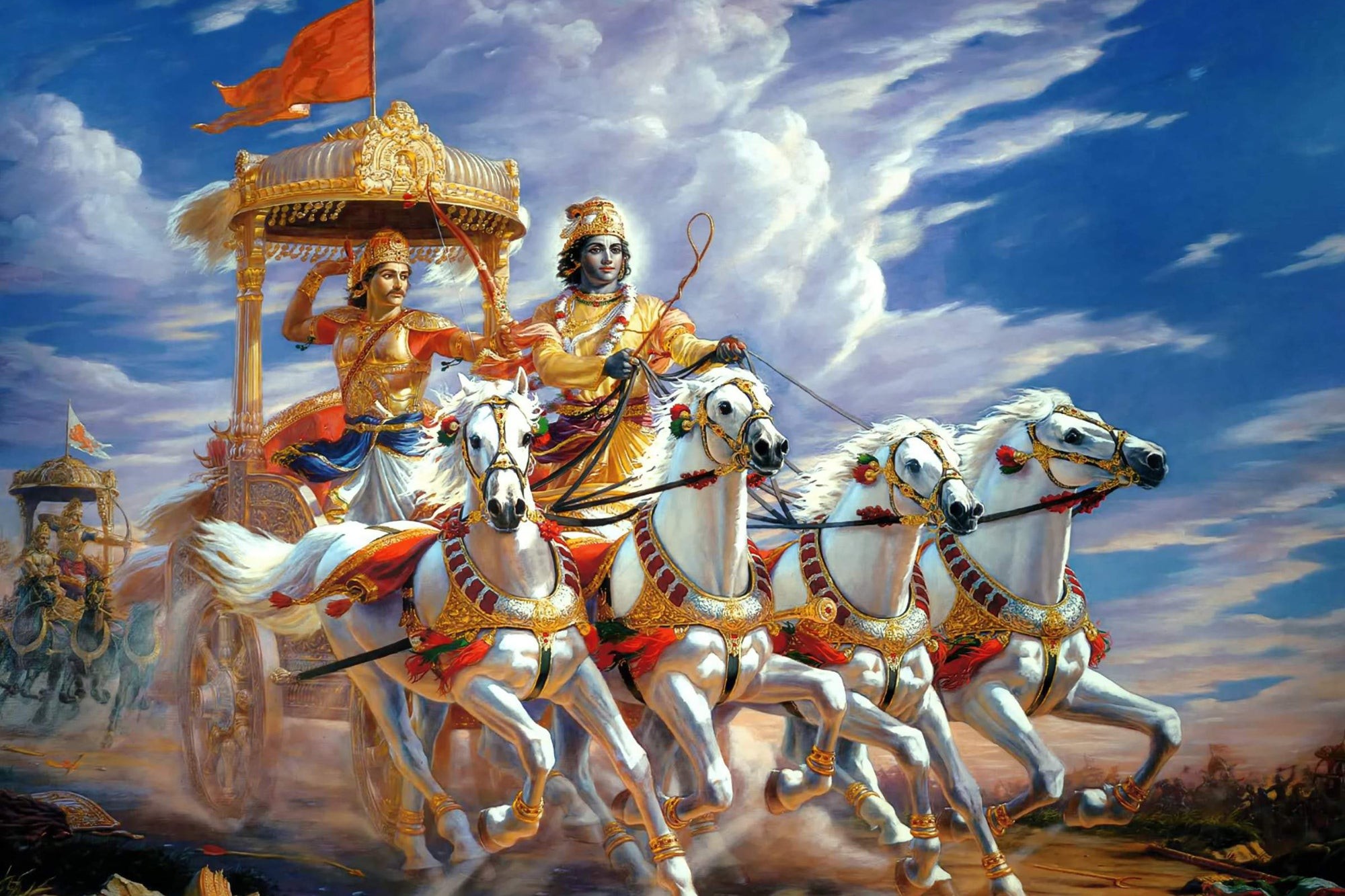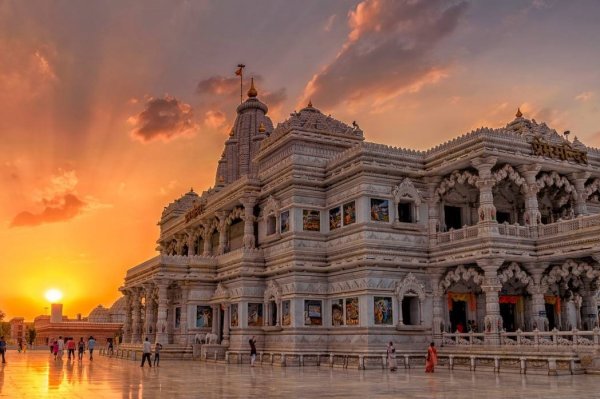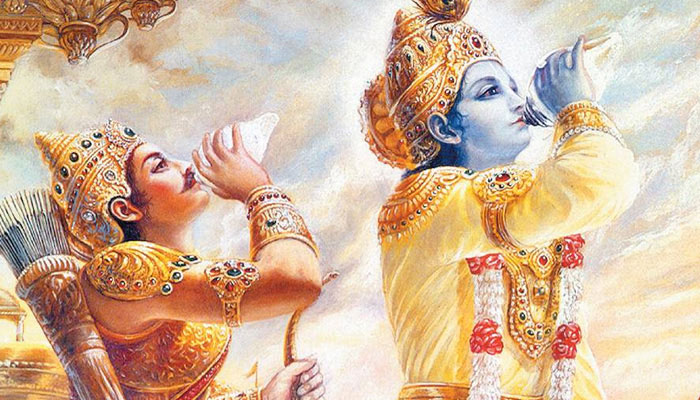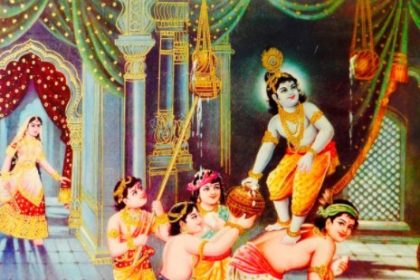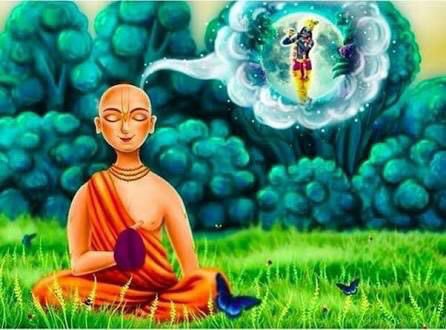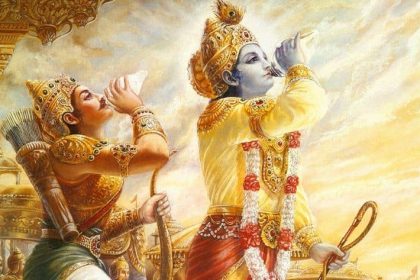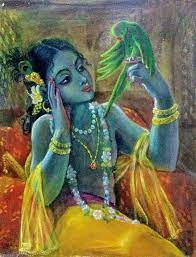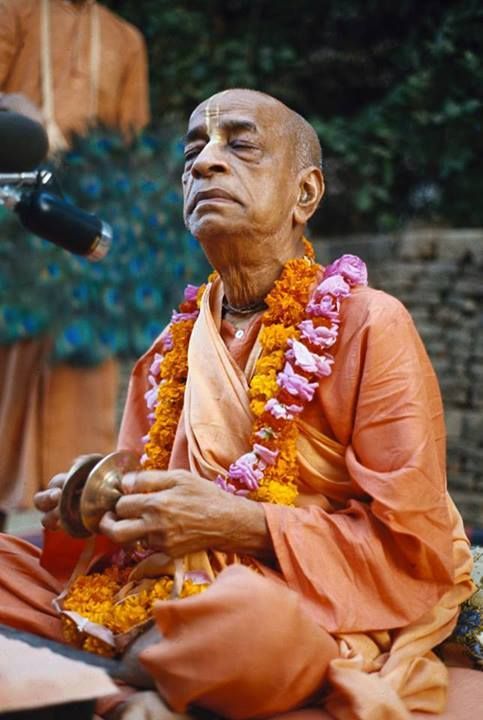Bhagavad-Gita 7.4
bhūmir āpo ‘nalo vāyuḥ
khaṁ mano buddhir eva ca
ahaṅkāra itīyaṁ me
bhinnā prakṛtir aṣṭadhā
SYNONYMS
bhūmiḥ—earth; āpaḥ—water; analaḥ—fire; vāyuḥ—air; kham—ether; manaḥ—mind; buddhiḥ—intelligence; eva—certainly; ca—and; ahaṅkāraḥ—false ego; iti—thus; iyam—all these; me—My; bhinnā—separated; prakṛtiḥ—energies; aṣṭadhā—eightfold.
TRANSLATION
Earth, water, fire, air, ether, mind, intelligence and false ego—all together these eight constitute My separated material energies.
PURPORT
The science of God analyzes the constitutional position of God and His diverse energies. Material nature is called prakṛti, or the energy of the Lord in His different puruṣa incarnations (expansions) as described in the Sātvata-tantra:
viṣṇos tu trīṇi rūpāṇi
puruṣākhyāny atho viduḥ
ekaṁ tu mahataḥ sraṣṭṛ
dvitīyaṁ tv aṇḍa-saṁsthitam
tṛtīyaṁ sarva-bhūta-sthaṁ
tāni jñātvā vimucyate
“For material creation, Lord Kṛṣṇa’s plenary expansion assumes three Viṣṇus. The first one, Mahā-Viṣṇu, creates the total material energy, known as the mahat-tattva. The second, Garbhodakaśāyī Viṣṇu, enters into all the universes to create diversities in each of them. The third, Kṣīrodakaśāyī Viṣṇu, is diffused as the all-pervading Supersoul in all the universes and is known as Paramātmā. He is present even within the atoms. Anyone who knows these three Viṣṇus can be liberated from material entanglement.”
This material world is a temporary manifestation of one of the energies of the Lord. All the activities of the material world are directed by these three Viṣṇu expansions of Lord Kṛṣṇa. These puruṣas are called incarnations. Generally one who does not know the science of God (Kṛṣṇa) assumes that this material world is for the enjoyment of the living entities and that the living entities are the puruṣas—the causes, controllers and enjoyers of the material energy. According to Bhagavad-gītā this atheistic conclusion is false. In the verse under discussion it is stated that Kṛṣṇa is the original cause of the material manifestation. Śrīmad-Bhāgavatam also confirms this. The ingredients of the material manifestation are separated energies of the Lord. Even the brahmajyoti, which is the ultimate goal of the impersonalists, is a spiritual energy manifested in the spiritual sky. There are no spiritual diversities in the brahmajyoti as there are in the Vaikuṇṭhalokas, and the impersonalist accepts this brahmajyoti as the ultimate eternal goal. The Paramātmā manifestation is also a temporary all-pervasive aspect of the Kṣīrodakaśāyī Viṣṇu. The Paramātmā manifestation is not eternal in the spiritual world. Therefore the factual Absolute Truth is the Supreme Personality of Godhead Kṛṣṇa. He is the complete energetic person, and He possesses different separated and internal energies.
In the material energy, the principal manifestations are eight, as above mentioned. Out of these, the first five manifestations, namely earth, water, fire, air and sky, are called the five gigantic creations or the gross creations, within which the five sense objects are included. They are the manifestations of physical sound, touch, form, taste and smell. Material science comprises these ten items and nothing more. But the other three items, namely mind, intelligence and false ego, are neglected by the materialists. Philosophers who deal with mental activities are also not perfect in knowledge because they do not know the ultimate source, Kṛṣṇa. The false ego—”I am,” and “It is mine,” which constitute the basic principle of material existence—includes ten sense organs for material activities. Intelligence refers to the total material creation, called the mahat-tattva. Therefore from the eight separated energies of the Lord are manifest the twenty-four elements of the material world, which are the subject matter of Sāṅkhya atheistic philosophy; they are originally offshoots from Kṛṣṇa’s energies and are separated from Him, but atheistic Sāṅkhya philosophers with a poor fund of knowledge do not know Kṛṣṇa as the cause of all causes. The subject matter for discussion in the Sāṅkhya philosophy is only the manifestation of the external energy of Kṛṣṇa, as it is described in the Bhagavad-gītā.
Caitanya Caritamrta, Madhya-lila 19.151
brahmāṇḍa bhramite kona bhāgyavān jīva
guru-kṛṣṇa-prasāde pāya bhakti-latā-bīja
SYNONYMS
brahmāṇḍa bhramite—wandering in this universe; kona—some; bhāgyavān—most fortunate; jīva—living being; guru—of the spiritual master; kṛṣṇa—of Kṛṣṇa; prasāde—by the mercy; pāya—gets; bhakti-latā—of the creeper of devotional service; bīja—the seed.
TRANSLATION
“According to their karma, all living entities are wandering throughout the entire universe. Some of them are being elevated to the upper planetary systems, and some are going down into the lower planetary systems. Out of many millions of wandering living entities, one who is very fortunate gets an opportunity to associate with a bona fide spiritual master by the grace of Kṛṣṇa. By the mercy of both Kṛṣṇa and the spiritual master, such a person receives the seed of the creeper of devotional service.
PURPORT
When we speak of brahmāṇḍa, we refer to the whole universe, or to the cluster of many millions of universes. In all the universes there are innumerable planets, and there are innumerable living entities upon those planets—in the air, on land and in the water. There are millions and trillions of living entities everywhere, and they are engaged by māyā in suffering and enjoying the results of their fruitive activity, life after life. This is the position of the materially conditioned living entities. Out of many of these living entities, one who is actually fortunate (bhāgyavān) comes in contact with a bona fide spiritual master by Kṛṣṇa’s mercy.
Kṛṣṇa is situated in everyone’s heart, and if one desires something, Kṛṣṇa fulfills one’s desire. If the living entity by chance or fortune comes in contact with the Kṛṣṇa consciousness movement and wishes to associate with that movement, Kṛṣṇa, who is situated in everyone’s heart, gives him the chance to meet a bona fide spiritual master. This is called guru-kṛṣṇa-prasāda. Kṛṣṇa is prepared to bestow His mercy upon all living entities, and as soon as a living entity desires the Lord’s mercy, the Lord immediately gives him an opportunity to meet a bona fide spiritual master. Such a fortunate person is fortified by both Kṛṣṇa and the spiritual master. He is helped from within by Kṛṣṇa and from without by the spiritual master. Both are prepared to help the sincere living being become free from material bondage.
How one can become this fortunate can be seen in the life of Śrīla Nārada Muni. In his previous life he was born of a maidservant. Although he was not born into a prestigious position, his mother was fortunately engaged in rendering service to some Vaiṣṇavas. When these Vaiṣṇavas were resting during the Cāturmāsya period, the boy Nārada took the opportunity to engage in their service. Taking compassion upon the boy, the Vaiṣṇavas offered him the remnants of their food. By serving these Vaiṣṇavas and obeying their orders, the boy became the object of their sympathy, and by the Vaiṣṇavas’ unknown mercy, he gradually became a pure devotee. In the next life he was Nārada Muni, the most exalted of Vaiṣṇavas and the most important guru and ācārya of Vaiṣṇavas.
Following in the footsteps of Nārada Muni, this Kṛṣṇa consciousness movement is rendering service to humanity by giving everyone a chance to come in contact with Kṛṣṇa. If one is fortunate, he becomes intimately related with this movement. Then, by the grace of Kṛṣṇa, one’s life becomes successful. Everyone has dormant kṛṣṇa-bhakti—love for Kṛṣṇa—and in the association of good devotees, that love is revealed. As stated in the Caitanya-caritāmṛta (Madhya 22.107):
nitya-siddha-kṛṣṇa-prema ‘sādhya’ kabhu naya
śravaṇādi-śuddha-citte karaye udaya
Dormant devotional service to Kṛṣṇa is within everyone. Simply by associating with devotees, hearing their good instructions and chanting the Hare Kṛṣṇa mantra, dormant love for Kṛṣṇa is awakened. In this way one acquires the seed of devotional service. Guru-kṛṣṇa-prasāde pāya bhakti-latā-bīja [Cc. Madhya 19.151].


